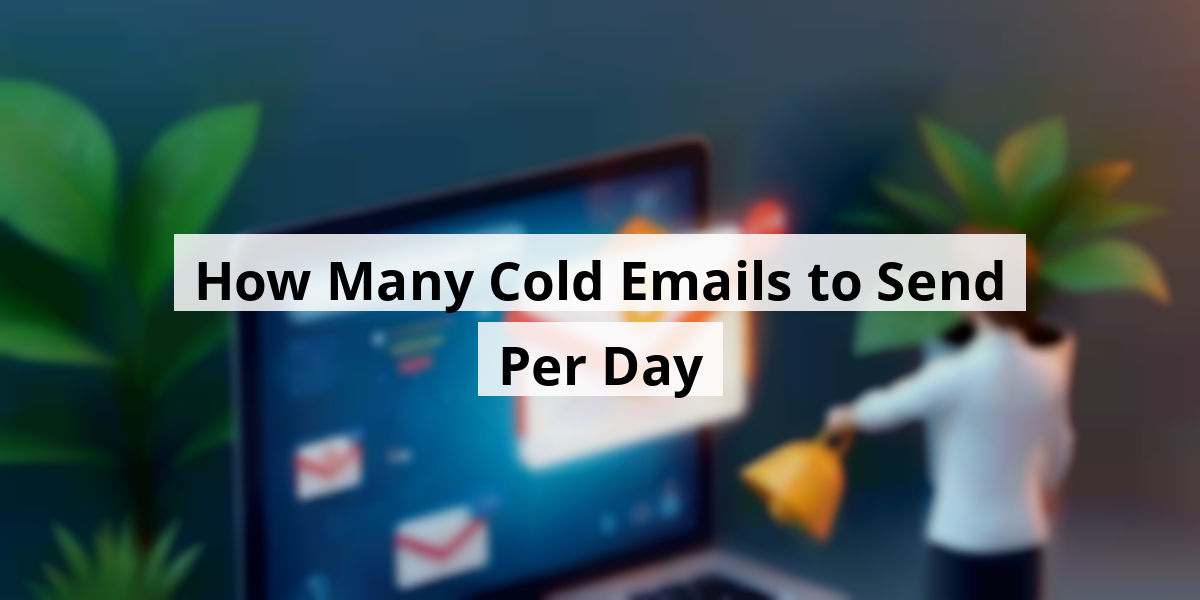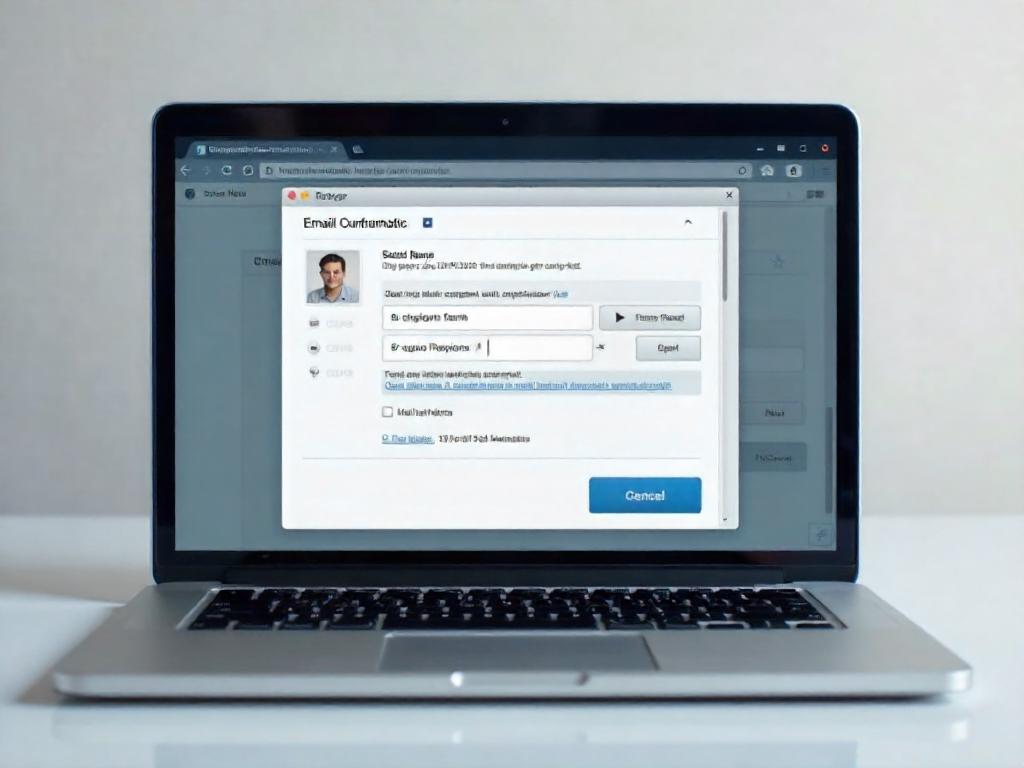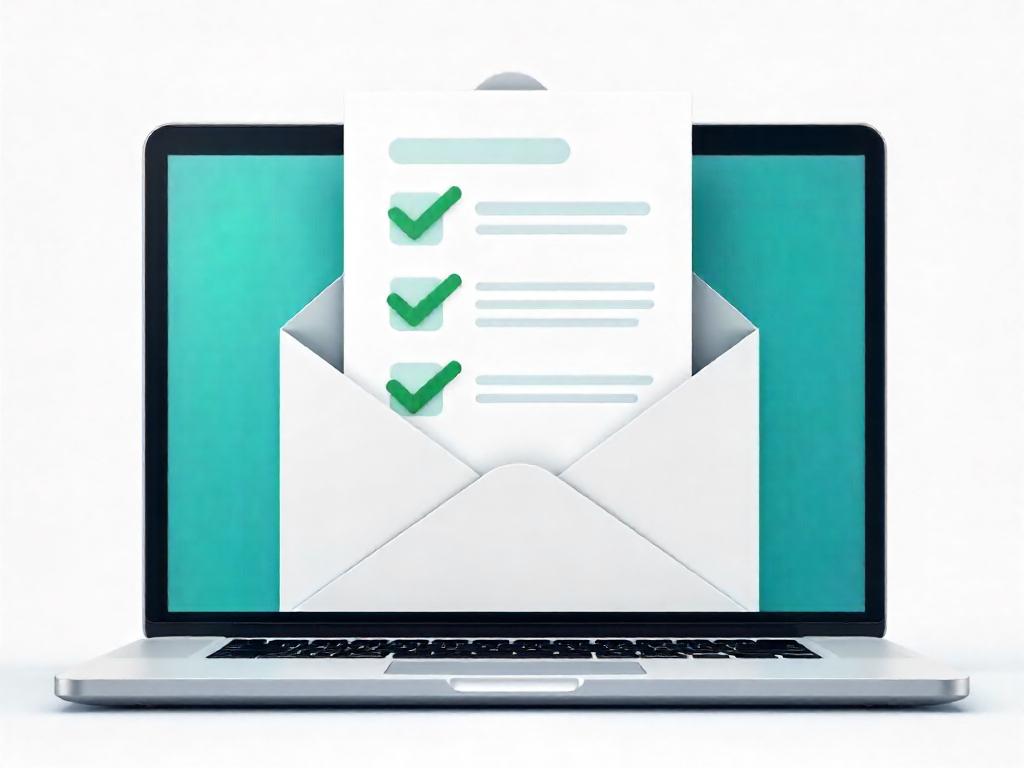 LIMITED SPOTS
All plans are 30% OFF for the first month! with the code WELCOME303
LIMITED SPOTS
All plans are 30% OFF for the first month! with the code WELCOME303

 LIMITED SPOTS
All plans are 30% OFF for the first month! with the code WELCOME303
LIMITED SPOTS
All plans are 30% OFF for the first month! with the code WELCOME303


Now we're going to talk about a handy little tool that can make cold emailing feel less like sailing through a hurricane and more like a gentle breeze. Let's unfold this with some humor and insights!
So, you've decided to give cold emailing a shot. Maybe you're trying to land that dream client or just reconnecting with the in-laws (good luck with that!). Either way, before you start firing off those emails, let’s chat about getting your email account comfy and cozy with a warmup routine.
Employing an email warmup service is like allowing a toddler to dip their toes in the pool before jumping in. The last thing we want is for our well-crafted emails to plummet straight into the spam abyss. Trust us, spam isn’t where the cool kids hang out!
Now, sure, you could dive into this warmup thing yourself. But, who has time for that? Manually warming up your inbox is about as fun as watching paint dry. Instead, these nifty services can automate the process for us and save our sanity. Imagine not having to crunch numbers while you’re busy trying to figure out if you're out of coffee!
After a few days of steady email sending, these services crank it up to a level where we can hit our target. It’s like building a muscle; no one wants to go from couch potato to fitness guru overnight!
Whether you're plotting your first cold email campaign or polishing an old strategy, warming that inbox isn’t just a good idea. It’s like putting on a nice pair of socks before stepping into your winter boots. Trust us, it makes a world of difference.
So, let’s embrace technology here! We’ll look like seasoned pros who know their way around the email game, dodging spam filters like a ninja avoiding laser beams. And while we’re at it, we might as well make a game out of it—can we warm up our inbox faster than our morning coffee brews?
Now we are going to talk about what makes a successful daily email strategy. We’ve all been there, right? Our inboxes are like a bustling highway, and suddenly, a truckload of emails screeches in. How many do we actually take a peek at? Spoiler alert: Probably not many!


Every email service provider has its quirks. However, one universal truth prevails: nothing raises red flags faster than an account that starts firing off emails like a kid on a sugar rush. So, if we’re on a mission to send those shiny cold emails, we might want to throttle back a bit.
Spammers, bless their hearts, have their own style. They whip up accounts and launch a blitzkrieg of emails, trying to reach the world in record time. This tactic, unfortunately, blows it for the rest of us. That's why warming up your inbox is essential if we want to operate like a pro.
So what are the golden rules of cold emailing? Glad you asked! We’ve gathered some pearls of wisdom:
Further to these tips, it’s wise to verify our email lists before hitting send. No one likes a bounced message! Also, setting up domain security features like SPF, DKIM, and DMARC is like putting up a ‘welcome mat’ that says, “We play nice!”
Lastly, let’s not forget to check our ESP’s daily sending limits—because no one wants to be “that person” who exceeds the limit and ends up like a kid caught sneaking cookies from the jar!
Now we are going to chat about a crucial aspect of managing your email game—knowing your email service provider's (ESP) daily sending limit. This is a big deal for anyone looking to avoid the dreaded spam folder!

When we talk about sending emails, the first thing to consider is how many we actually want to fire off in a day. If you’re aiming high with your email ambitions, it might be time to give your ESP a little upgrade. Let’s face it: sending out emails from a free Gmail or Outlook account? That’s like trying to go into battle with a rubber sword. Those free accounts are often flagged by spam filters. No one wants to be mistaken for a scammer!
And here’s a tidbit that might surprise you—most ESPs count the total number of emails sent and equate that with the number of recipients. So, if you think you’re clever by BCC-ing everyone in one email, think again; those sneaky limits don't budge!
Let's take a look at a helpful list of some of the most popular ESPs and their sending limits:
| Email Service Provider | Daily Sending Limit |
|---|---|
| Gmail (Free) | 500 |
| Gmail (Google Workspace) | 2000 |
| Outlook (Free) | 300 |
| Microsoft 365/Office 365 | 10,000 |
| Zoho (Free) | 50 |
| Zoho (Paid) | 300 |
| GoDaddy | 250 |
| Yahoo! | 500 |
| HostGator | 12,000 |
| Amazon SES | 10,000 |
| SendGrid (Free) | 100 |
| SendGrid (Essentials) | Up to 100,000 per month |
| Sendpost (Starter) | 10,000 per month |
So, there you have it! Knowing your ESP's sending limits can save us a lot of headaches and ensure we don't accidentally find ourselves in email purgatory. Just remember: no one wants to be the one sending emails into the void, right? Save those rubber swords for Halloween!
Now we are going to talk about what really happens when we overshoot those daily sending limits in our email endeavors. Spoiler alert: it’s not pretty! But don’t worry, we’ve got some insights to share.
Let’s face it, exceeding the daily limit is like running a red light—sometimes, we just don't notice until it’s too late! Depending on your email service provider (ESP), the consequences can vary. Take Google, for instance. If we overspend our emailing allowance there, it’s like trying to get a refill on a soda when the restaurant is already piling up those empty glasses—they just hit us with “No more for you today.” Then there are others, like Microsoft and Zoho. They can be a bit more forgiving; they’ll hold onto our emails like a squirrel with its acorns until we’re back below the threshold. How sweet of them, right?
Generally speaking, most ESPs won’t slap your account with a suspension right off the bat for hitting that limit, but keep it up and you may find yourself left out in the cold. It’s like that friend who shows up late for dinner every time—eventually, they might just stop getting invited!
So, what’s the best strategy to keep our emails flowing? Well, we've picked up a few tricks along the way. Here’s a little list to keep us on track:
One of the savvy ways to sidestep being at the mercy of those sender limits is to spread our emailing joy across several accounts. Services like Mailstand can lend a helping hand. Think of it like sharing dessert; no one wants to be the only one with a piece of cake while everyone else is watching. With multiple accounts, we can boost our deliverability and dodge those pesky issues that pop up when we overload a single address. So let’s keep our email game strong and avoid those cringe-worthy moments of hitting ‘send’ only to get a big fat “No!” in return!
Now we are going to talk about something that can make or break your email game—sender reputation. It's one of those behind-the-scenes scores that, honestly, not many folks think about until they find their sparkling emails stuck in the dreaded spam folder.


Your sender reputation is like the report card for your email domain. It tells email providers whether they should trust you or roll their eyes and send your messages straight to the junk folder. Just imagine for a moment, you’ve crafted this brilliant email, pouring your heart into every word, only for it to end up next to those 'Nigerian Prince' scams. Ouch!
When our sender score is looking good, it’s like having a VIP pass—our messages glide right into our reader's inbox. A higher score means more people actually see what we’ve sent. But if our score takes a nosedive, well, it’s pretty much a one-way ticket to Spam City. To keep your reputation healthy, it’s smart to run an email deliverability test regularly. This helps you spot issues early and ensure your campaigns consistently land in inboxes.
Having a stellar sender reputation isn't just a nice-to-have; it's crucial for those cold email campaigns where we’re trying to connect with new folks. Email servers will check our score to see if we’re on the up and up, like a bartender checking IDs before serving drinks.
So, what pulls our shiny score down into the abyss? There are a few villains lurking in the shadows:
If too many people raise their hands and shout "spam," that’s a surefire way to send our reputation packing.
And let’s not forget about those bounces! Sending emails to accounts that have turned into digital ghost towns can hurt us. It's like trying to call a friend who’s moved to another country—good luck getting through!
Also, a little advice: stay away from buying email lists. Chances are, those lists are packed with spam traps waiting to snafu our sender score.
Spam traps are like the booby traps of email; they catch us unawares, punishing anyone who sends messages to whatever email addresses they can scrounge up.
Avoiding these snares is essential. If we land in one, we risk being blacklisted, and not the cool kind where everyone wants to be seen with us.
In a nutshell, our sender reputation is our email calling card. Keeping it in good standing is not just smart; it’s essential for ensuring our emails get the reception they deserve.
Now we are going to talk about an often overlooked yet crucial aspect of email marketing: maintaining a clean email list. It’s a bit like cleaning out the fridge—you know there’s that questionable container lurking in the back, but it takes a little push to get you to dig it out. Keeping your email list tidy is equally essential for ensuring your messages actually reach anyone at all!
Let's face it: who among us hasn’t created a “throwaway” email just for signing up for that online sale or newsletter? We may hold onto old addresses like a kid holds onto a security blanket. But, alas! What we need to realize is that while nostalgia is warm and fuzzy, a cluttered email list is anything but. Picture this: you send out an email blast, only to have half of them bounce back. Ouch! That's a blow to our *sender reputation*, which, by the way, isn’t something we can just brush off. So, what can we do to keep our digital house in order? Let’s take a look:
Cleaning your list helps ensure that when we take the time to hit that "send" button, our lovingly crafted messages land in eager inboxes instead of the void or worse, becoming spam. Remember that time a friend told you they finally cleaned out their junk drawer? They found long-lost treasures—and that’s exactly what could happen with your email list. So, while some may cling to old contacts like they might cling to their high school yearbook, let’s step into email adulthood. Our sender reputation will thank us as we keep our lists full of fresh and engaged recipients. Here’s to making email marketing a little less like hunting for buried treasure and a lot more like a walk in the park!
Now we are going to talk about effective strategies to enhance cold emailing and create lasting connections with potential clients.

Cold emailing can be a secret weapon in your marketing arsenal. We think of it as the friendly neighbor who brings cookies instead of a door-to-door salesman.
Follow these tips, and you might turn your cold email efforts into a hot topic of conversation!
With the right tools, we can monitor our sender reputation and boost our deliverability rate. Want to jump in on this? Discover Warmup Inbox for free!
| Tip | Description |
|---|---|
| Email Warmup | Fires up your email account to avoid looking suspicious. |
| Follow Limits | Staying within the boundaries to keep your campaigns safe. |
| Sender Reputation | Maintaining a positive track record with your recipients. |
| List Hygiene | Regularly removing inactive subscribers to keep things fresh. |
Getting into cold emailing can feel like venturing into an ice cave – chilly and intimidating! However, every great explorer started somewhere, right?
We remember the first time we sent out a cold email. Was it awkward? Absolutely. Did we hit send with sweaty palms? You bet! But the more we practiced, the better we got at crafting compelling messages that resonate.
Let’s not forget about humor—imagine getting an email from someone who sounds like a robot. Yawn, right? Infusing a bit of personality can distinguish our emails and make recipients smile while they read. After all, aren't we all just human beings trying to connect over screens and keyboards?
So, as we navigate this chilly landscape of cold emails, let's keep things light, clear, and remember: our goal is to make genuine connections. And who knows? The next email we send could open a door to a fantastic relationship!

